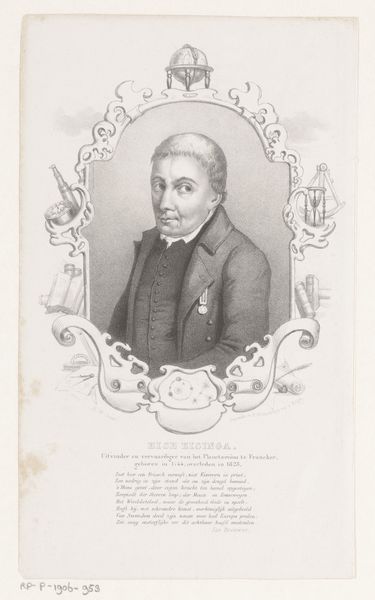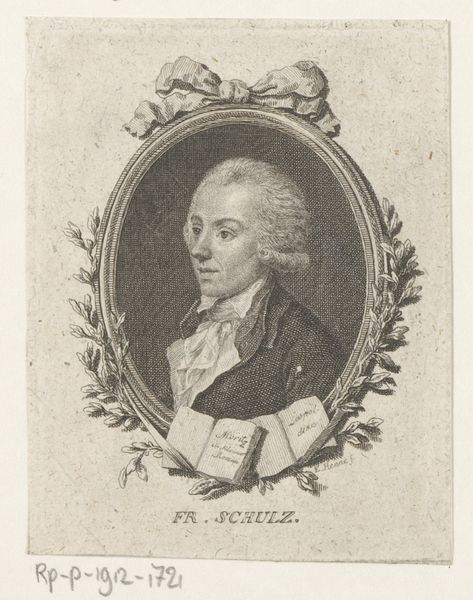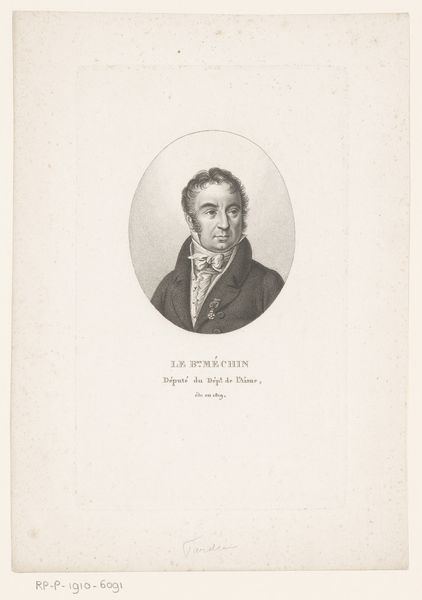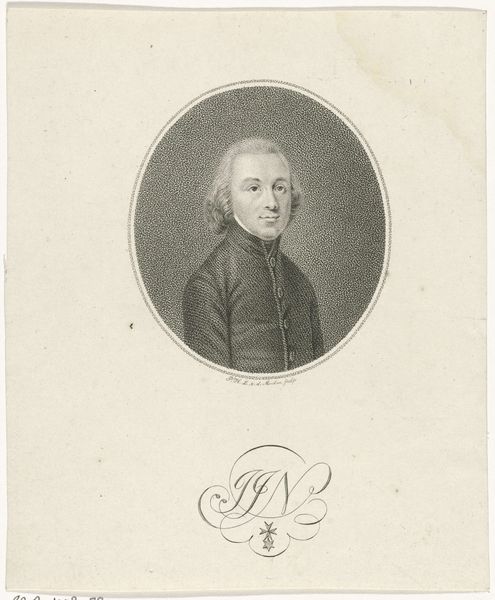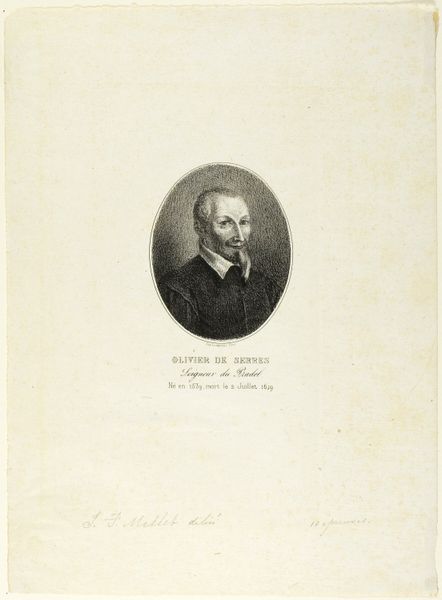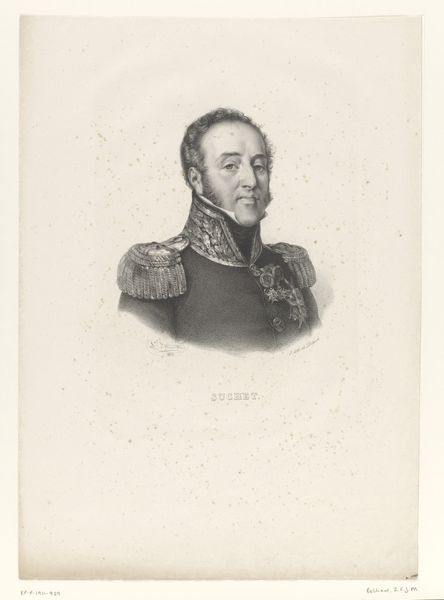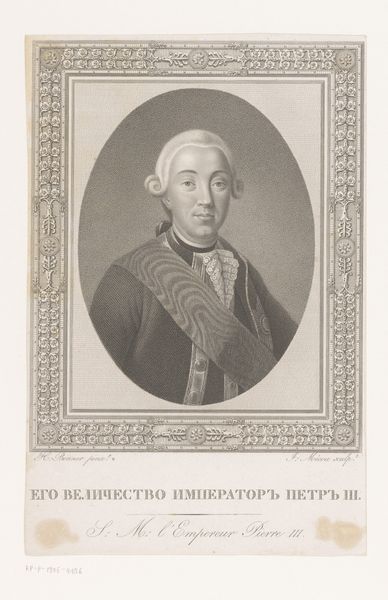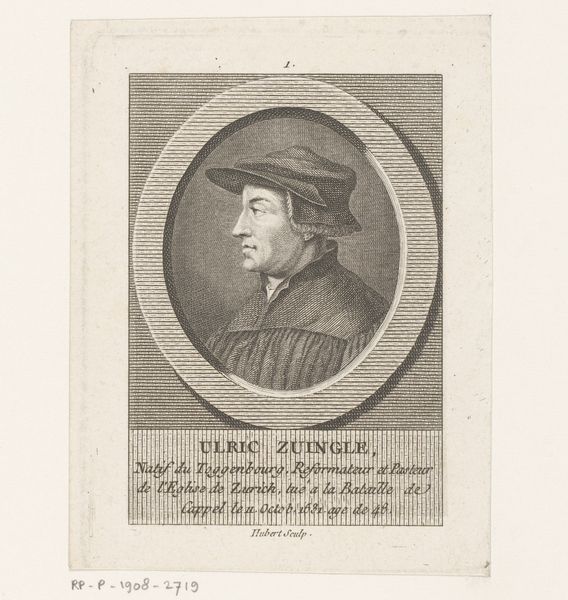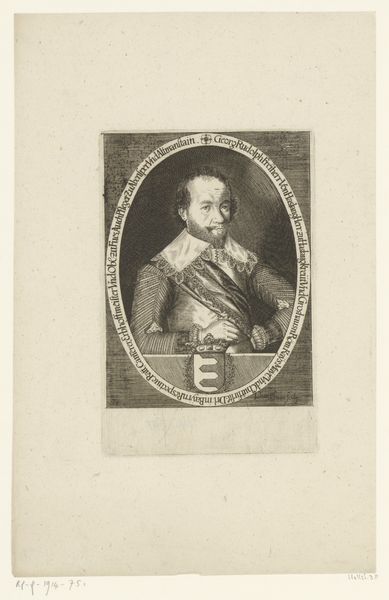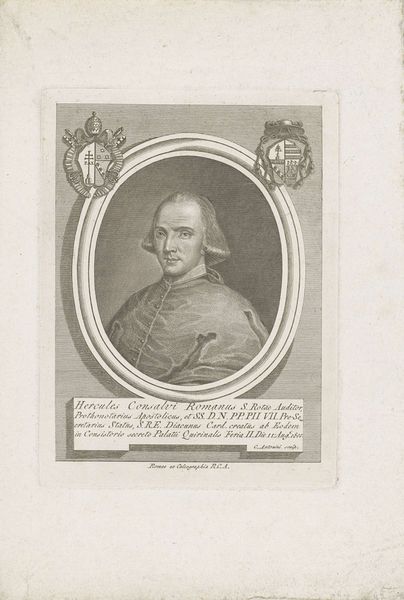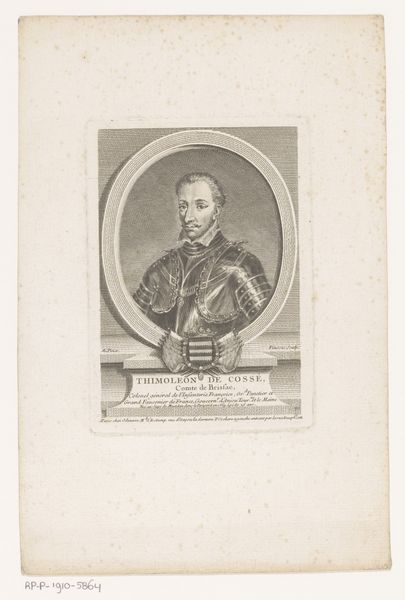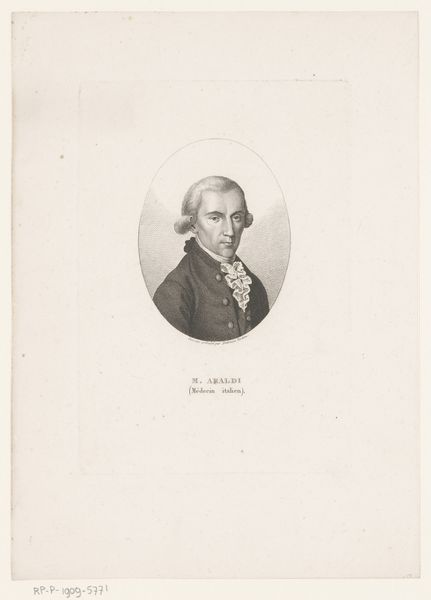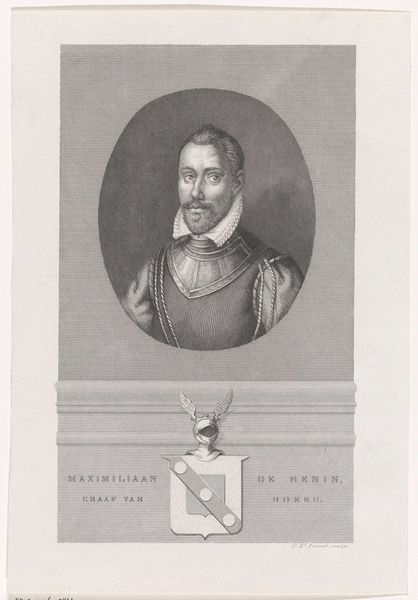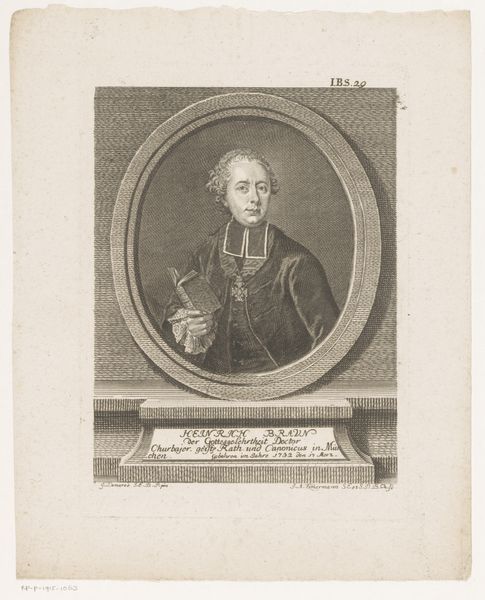
engraving
#
portrait
#
neoclacissism
#
form
#
line
#
academic-art
#
engraving
Dimensions: height 56 mm, width 84 mm
Copyright: Rijks Museum: Open Domain
This portrait of Johann Kaspar Lavater was made by Noach van der Meer the Younger. Though we don't know the exact date, it would have been sometime in the late 18th or early 19th century. The work is an etching, a printmaking process that relies on the corrosive power of acid. First, a metal plate, likely copper, would have been coated with a waxy, acid-resistant material. The artist then draws through this coating, exposing the metal underneath. When the plate is submerged in acid, the exposed lines are eaten away, creating grooves. The deeper the lines, the more ink they hold, resulting in darker lines on the printed image. This process is inherently reproducible, and was perfectly suited to the burgeoning culture of information in the 18th century. Printmaking allowed for the relatively inexpensive distribution of images, playing a vital role in shaping public opinion and disseminating knowledge. This portrait is a testament to the power of reproducible media in shaping our understanding of individuals and ideas. It collapses the perceived divide between art and industry.
Comments
No comments
Be the first to comment and join the conversation on the ultimate creative platform.
